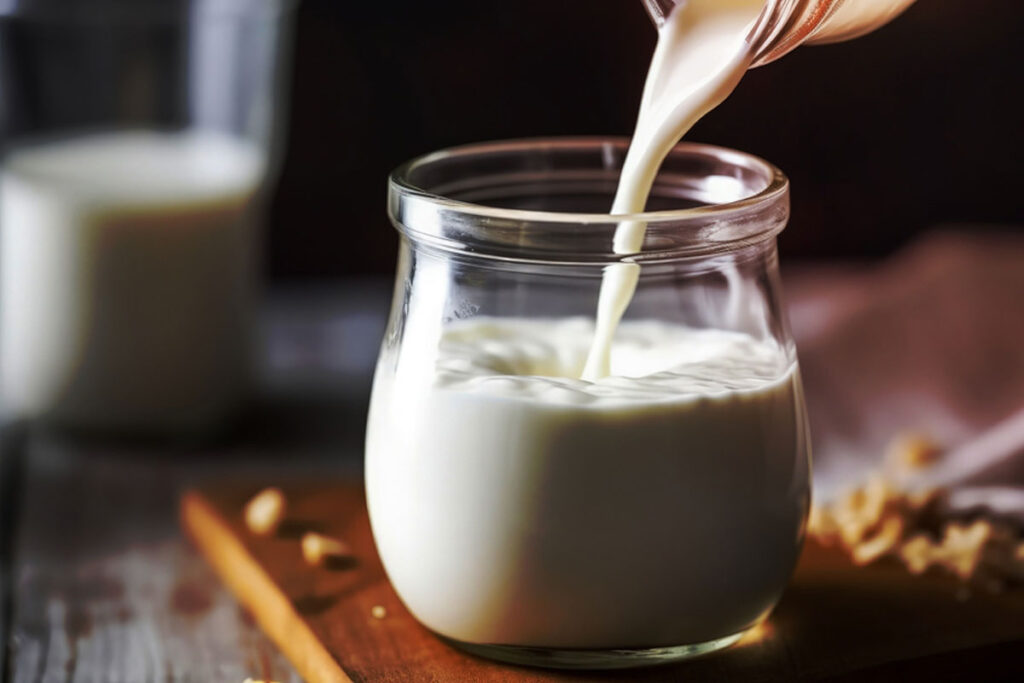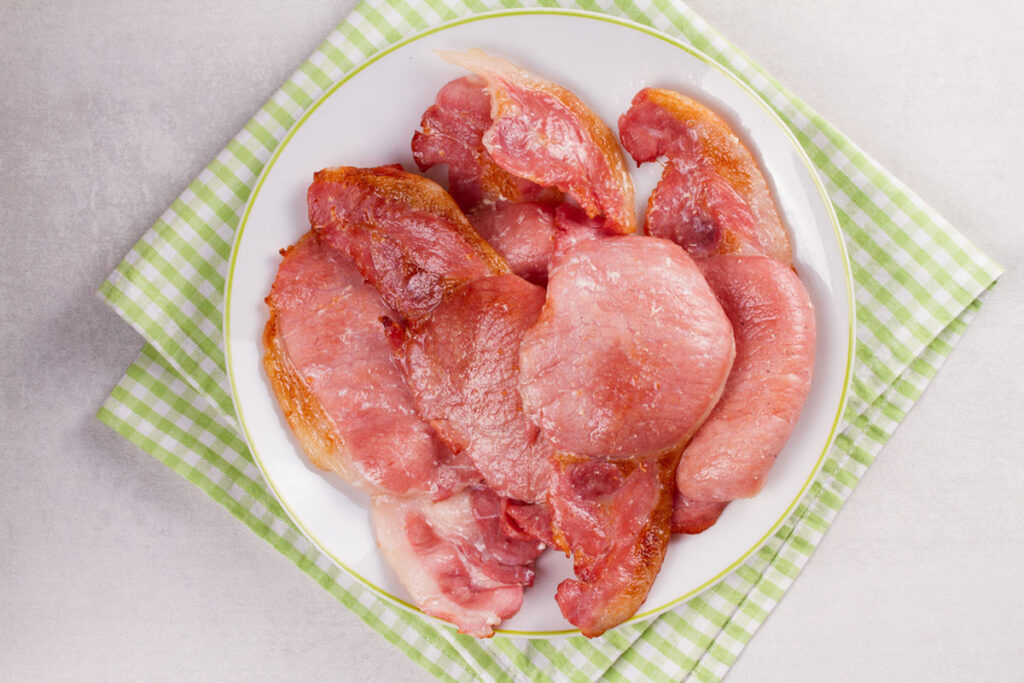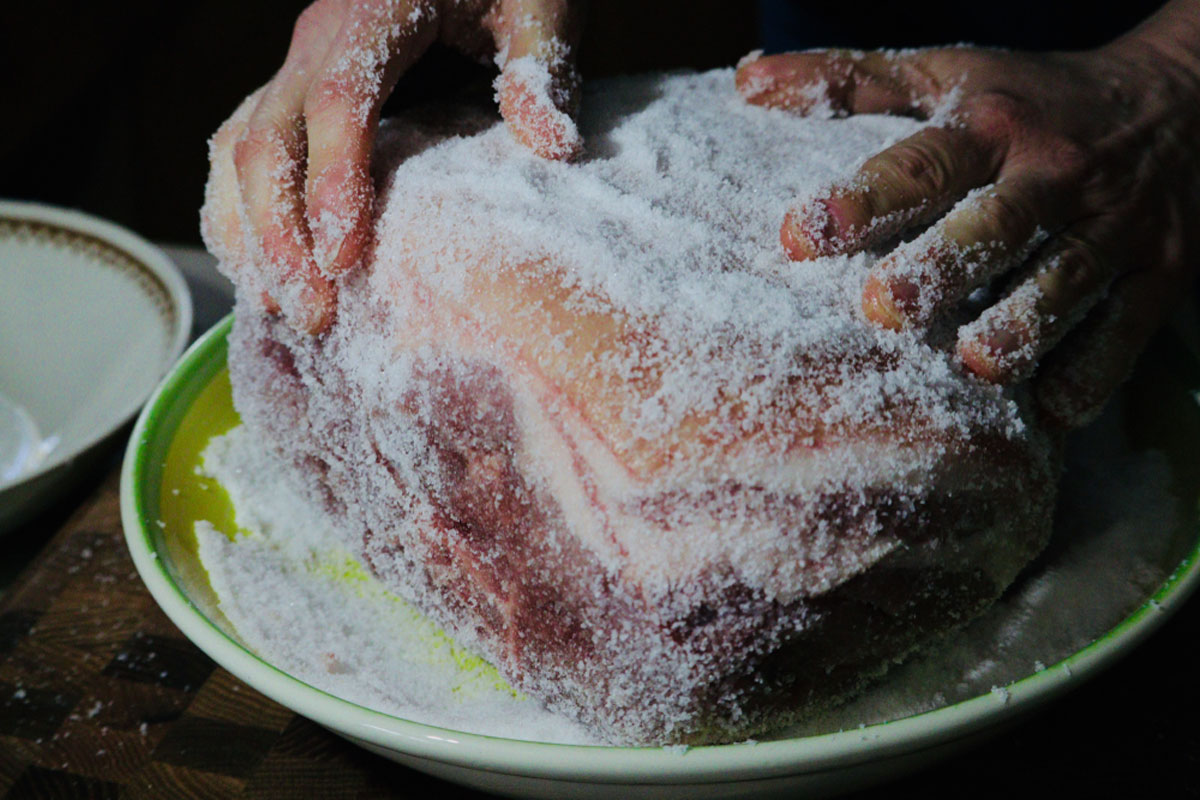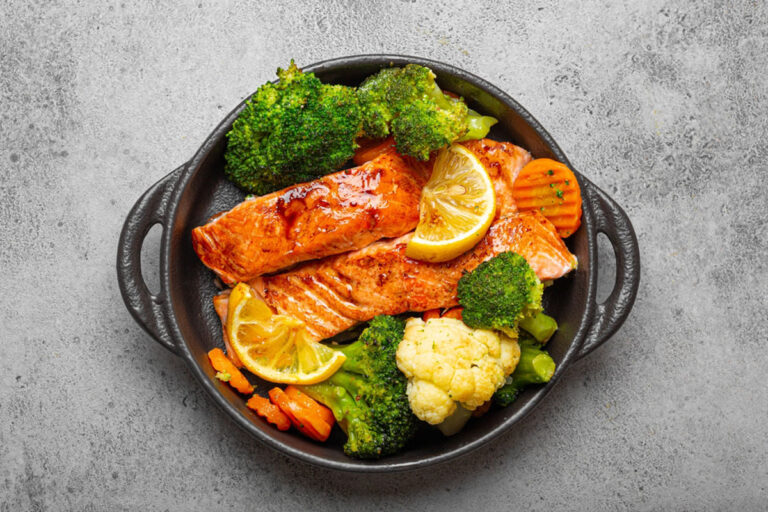Introduction to Irish Food Preservation
Ireland, known for its lush landscapes and vibrant culture, also boasts a rich culinary heritage deeply intertwined with the art of food preservation. Historically, the island’s inhabitants faced long winters and periods of scarcity, necessitating the development of effective methods to preserve food and ensure a stable supply of nutrients throughout the year. These preservation techniques—such as pickling, fermentation, salting, and curing—were not only practical solutions but also became integral to the distinctive flavors and dishes of Irish cuisine.
The importance of food preservation in Ireland can be traced back centuries, with practices evolving to suit the local environment and available resources. Root vegetables, dairy, meats, and seafood all found their way into preservation processes, allowing communities to make the most of their harvests and livestock. These methods ensured that families could endure lean times and celebrate bountiful seasons with an array of preserved delicacies.
In contemporary times, there has been a resurgence of interest in traditional preservation techniques, both for their historical value and their alignment with modern trends toward sustainability and self-sufficiency. As more people seek to connect with their culinary roots and reduce food waste, the time-honored practices of pickling, fermenting, salting, and curing are once again taking center stage in Irish kitchens.
The Art of Pickling in Ireland
Pickling is one of the oldest and most cherished food preservation methods in Ireland. This technique has allowed Irish families to extend the shelf life of their harvests and enjoy the vibrant flavors of vegetables year-round. Traditionally, pickling involves immersing vegetables in a solution of vinegar or brine, often accompanied by a blend of spices and herbs, to create a tangy, preserved product.
Historical Significance
In the past, pickling was essential for Irish households, particularly during the long, harsh winters when fresh produce was scarce. Families would pickle a variety of vegetables, including beets, cucumbers, onions, and cabbage. These preserved foods provided essential vitamins and nutrients, ensuring a balanced diet even when fresh vegetables were unavailable. The process of pickling also allowed families to avoid waste by preserving excess produce from the summer and autumn harvests.
Pickling Techniques
The traditional Irish pickling process is relatively straightforward. Fresh vegetables are cleaned, chopped, and then placed in sterilized jars. A hot vinegar or brine solution, often seasoned with spices such as mustard seeds, dill, and bay leaves, is poured over the vegetables. The jars are then sealed and left to cool before being stored in a cool, dark place. Over time, the acidity from the vinegar or brine preserves the vegetables and enhances their flavors.
One notable example of Irish pickling is pickled cabbage, similar to sauerkraut. This dish is made by finely slicing cabbage, mixing it with salt, and allowing it to ferment in its own juices. The result is a tangy, crunchy condiment that pairs perfectly with traditional Irish meals such as boiled bacon and cabbage.
Culinary Applications
Pickled vegetables are a versatile addition to Irish cuisine, offering a burst of flavor and acidity that complements rich and hearty dishes. Pickled onions and cucumbers are often served alongside fish dishes, providing a refreshing contrast to the savory flavors. Pickled cabbage is a staple in many traditional meals, adding a tangy crunch that balances out the richness of meats and stews.
Modern Revival
In recent years, there has been a renewed interest in pickling, driven by a desire to return to more sustainable and self-sufficient food practices. Home cooks and artisanal producers are experimenting with new combinations of vegetables and spices, creating innovative pickled products that pay homage to traditional methods while appealing to contemporary tastes.
Farmers’ markets and specialty food stores across Ireland now offer a variety of pickled vegetables, reflecting the country’s growing appreciation for this time-honored preservation technique. Whether enjoyed as a snack, a side dish, or a condiment, pickled vegetables continue to hold a special place in Irish culinary traditions.
Fermentation – A Traditional Irish Technique
Fermentation is another cornerstone of Irish food preservation, deeply embedded in the country’s culinary traditions. This ancient method involves the transformation of food through the action of microorganisms such as bacteria, yeast, or fungi. In Ireland, fermentation has been crucial for preserving dairy products, beverages, and even some vegetables, enhancing both their shelf life and nutritional value.
Historical Significance
Fermentation has a long history in Ireland, with techniques passed down through generations. Before the advent of modern refrigeration, fermentation was essential for preserving milk, transforming it into products like yogurt, buttermilk, and cheese. These dairy products provided a vital source of nutrition, particularly in rural communities where fresh food was not always available year-round. Additionally, fermented beverages like homemade beers and ciders have been staples in Irish households, reflecting the resourcefulness and ingenuity of Irish food preservation practices.
Fermentation Techniques
The process of fermentation relies on the natural action of microorganisms to convert sugars into acids, gases, or alcohol. In dairy fermentation, lactic acid bacteria are the primary agents, transforming lactose (milk sugar) into lactic acid, which acts as a preservative. This process not only extends the shelf life of dairy products but also improves their digestibility and flavor.
For example, traditional Irish yogurt and buttermilk are made by introducing specific bacterial cultures to fresh milk, allowing it to ferment at a controlled temperature until it thickens and develops a tangy taste. Cheese-making involves a similar process, with the addition of rennet to coagulate the milk and form curds, which are then aged to develop their characteristic flavors and textures.
Fermented beverages, on the other hand, involve the conversion of sugars in fruits or grains into alcohol by yeast. Cider, a popular drink in Ireland, is made by fermenting apple juice, while traditional Irish beers are brewed from barley and other grains. These beverages not only offered a means of preserving surplus produce but also became integral to social and cultural practices in Ireland.
Culinary Applications
Fermented foods and beverages are celebrated for their complex flavors and health benefits. Fermented dairy products like yogurt and buttermilk are staples in Irish cuisine, used in baking, cooking, or enjoyed on their own. These products are valued not only for their taste but also for their probiotic properties, which support gut health.
Fermented beverages such as cider and beer have long been associated with Irish hospitality and festivities. They are enjoyed on their own or paired with traditional Irish dishes, enhancing the overall dining experience with their rich, nuanced flavors.
Modern Revival
In recent years, there has been a resurgence of interest in fermentation, driven by the growing awareness of its health benefits and culinary potential. Artisanal producers and home cooks are experimenting with traditional and innovative fermentation techniques, creating a diverse array of products that celebrate Ireland’s rich culinary heritage.
Markets and specialty shops now offer a variety of fermented foods and drinks, from classic dairy products to new takes on fermented vegetables and beverages. This revival not only honors the traditional methods of Irish food preservation but also aligns with modern trends towards sustainability and natural, probiotic-rich foods.

Salting and Curing – Preserving Irish Meats
Salting and curing are traditional food preservation methods that have played a significant role in Irish culinary history, particularly in preserving meats. Before the advent of modern refrigeration, these techniques were vital for preventing spoilage and ensuring a consistent supply of protein throughout the year. The process involves treating meat with salt and other seasonings to draw out moisture and inhibit the growth of bacteria, resulting in flavorful and long-lasting products.
Historical Significance
In Ireland, salting and curing meats were essential survival techniques, especially in rural areas where fresh meat was not always readily available. These methods allowed families to make use of their livestock efficiently, ensuring that no part of the animal went to waste. Pork, in particular, was a staple meat in Ireland, and various parts of the pig were salted and cured to create products that could be stored and enjoyed for months.
Salting and Curing Techniques
The process of salting involves rubbing the meat with salt, which acts as a preservative by drawing out moisture and creating an inhospitable environment for bacteria. In some cases, sugar and spices are added to the salt mixture to enhance flavor. The meat is then left to cure for a period of time, allowing the salt to penetrate and preserve it.
Curing can be done using dry methods, where the meat is coated in a salt mixture, or wet methods, where the meat is submerged in a brine solution. Both methods are effective in preserving meat and imparting distinct flavors. After curing, the meat may be air-dried, smoked, or cooked, depending on the desired end product.
Iconic Cured Meats in Irish Cuisine
One of the most iconic examples of cured meat in Irish cuisine is bacon. Traditional Irish bacon, often referred to as “rashers,” is made from the back or loin of the pig. The meat is salted and cured, sometimes smoked, and then sliced into thin pieces. Irish bacon is a key ingredient in the traditional Irish breakfast, served alongside eggs, sausage, and other items.
Corned beef, despite its association with Irish-American cuisine, also has roots in Irish preservation practices. The term “corned” refers to the large grains of salt used in the curing process. This method was used to preserve beef, which was then boiled and served with vegetables. Corned beef and cabbage remains a popular dish, especially around St. Patrick’s Day.
Culinary Applications
Cured meats are integral to many traditional Irish dishes, adding depth of flavor and richness. They are used in a variety of ways, from hearty breakfasts to comforting stews. Irish stew, for example, often includes chunks of cured pork for added flavor. Boiled bacon and cabbage is another classic dish, featuring salted pork simmered with cabbage and potatoes.
Modern Revival
There is a growing interest in artisanal and home-cured meats, reflecting a broader trend towards traditional and sustainable food practices. Small-scale producers and home cooks are experimenting with curing techniques, creating high-quality, flavorful meats that celebrate Ireland’s culinary heritage.
Farmers’ markets and specialty food shops now offer a range of artisanal cured meats, from traditional rashers to innovative new products. This revival not only preserves the skills and knowledge of past generations but also connects consumers with the rich flavors and history of Irish cuisine.

Cultural Significance and Modern Revival
As we conclude our exploration of Irish food preservation techniques, it’s essential to consider the cultural significance these methods hold in contemporary Ireland. From pickling and fermentation to salting and curing, these traditional practices are deeply rooted in Irish history and continue to shape the culinary landscape today.
Cultural Significance
Food preservation techniques have not only been practical necessities but also cultural touchstones for Irish communities. These methods were often carried out collectively, with families and neighbors coming together to prepare and preserve food. This communal aspect fostered a sense of shared purpose and mutual support, strengthening social bonds.
Moreover, the preserved foods themselves became symbols of Irish identity and heritage. Many traditional Irish dishes—such as Irish stew with cured pork, tangy pickled cabbage, and creamy fermented dairy products—reflect the ingenuity and resourcefulness of Ireland’s past. These dishes tell stories of resilience and adaptation, embodying the spirit of a people who made the most of their natural resources.
Modern Revival
In recent years, there has been a significant revival of interest in traditional food preservation techniques. This resurgence is driven by several factors, including a growing emphasis on sustainability, a desire for healthier and more natural foods, and a renewed appreciation for culinary heritage.
Artisanal producers, chefs, and home cooks are increasingly turning to these age-old methods to create high-quality, flavorful products. Farmers’ markets and specialty food shops across Ireland now feature a variety of artisanal pickles, fermented dairy products, and cured meats, reflecting the country’s rich culinary traditions.
Additionally, the rise of food tourism has spotlighted these preservation techniques, with visitors seeking authentic culinary experiences. Tours and workshops focused on traditional Irish food preservation methods have become popular, offering hands-on opportunities to learn about and taste the results of these ancient practices.
Adapting to Modern Tastes
While traditional methods remain at the core, modern adaptations and innovations are also emerging. Contemporary Irish cuisine often blends these preservation techniques with new flavors and ingredients, creating dishes that honor the past while appealing to modern palates. For example, chefs might experiment with different spices in pickling, introduce new grains in fermentation, or develop unique cured meat products.
Furthermore, the focus on sustainability has led to the integration of these techniques into broader efforts to reduce food waste and promote local, seasonal eating. By preserving excess produce and making use of every part of livestock, these practices contribute to a more sustainable food system.
Preserving Heritage for Future Generations
The revival and adaptation of Irish food preservation techniques are vital for keeping this aspect of cultural heritage alive. By teaching these methods to new generations, Ireland ensures that its rich culinary traditions continue to thrive. Cooking classes, community workshops, and educational programs play a crucial role in passing down the knowledge and skills associated with these preservation techniques.
As Ireland moves forward, the blend of tradition and innovation in food preservation will continue to shape the country’s culinary identity. These techniques not only connect the Irish people with their past but also offer a pathway to a more sustainable and flavorful future.
In summary, the ancient practices of pickling, fermentation, salting, and curing are more than just methods of food preservation. They are integral to the Irish way of life, reflecting the resilience, creativity, and communal spirit of Ireland. By embracing these traditions and adapting them to contemporary needs, Ireland preserves its culinary heritage while contributing to a sustainable and vibrant food culture.







